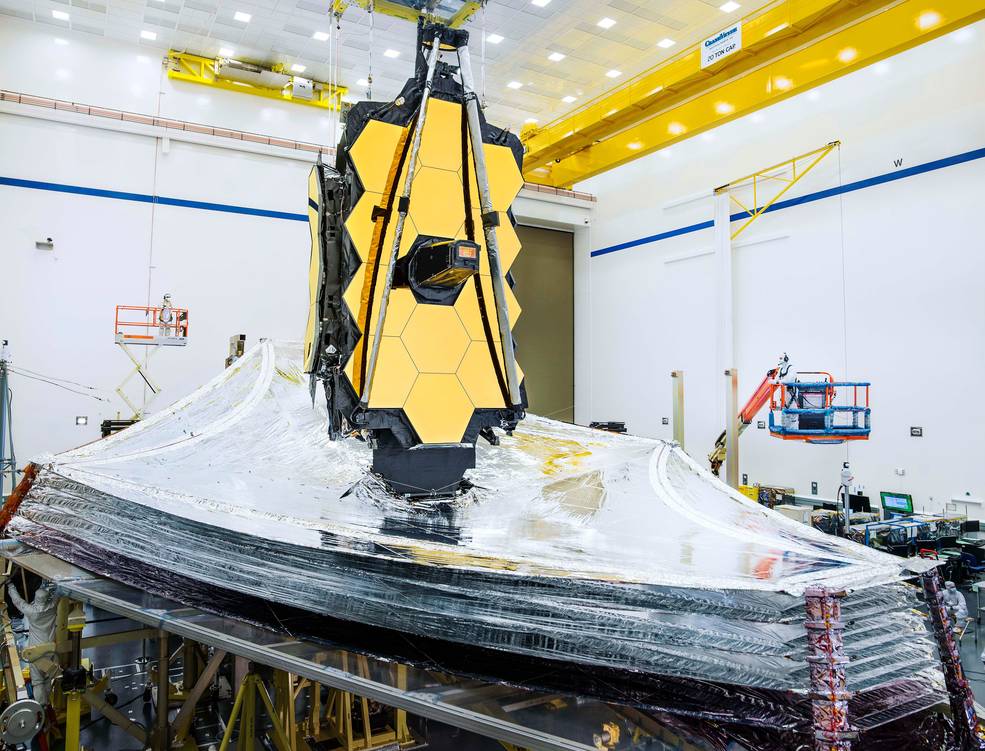
NASA’s troubled James Webb Space Telescope is coming closer to completion, having recently passed the important test of deploying its massive five-layered sunshield.
“This was the first time that the sunshield has been deployed and tensioned by the spacecraft electronics and with the telescope present above it,” James Cooper, NASA’s Webb Telescope Sunshield Manager at NASA’s Goddard Space Flight Center, Greenbelt, Maryland, said in a statement. “The deployment is visually stunning as a result, and it was challenging to accomplish.”
The sunshield is the size of a tennis court and is necessary to protect the telescope’s delicate machinery from the blasting heat of the sun. The side of the telescope facing the sun will be subjected to temperatures of up to 383 Kelvin (approximately 230 degrees Fahrenheit), with the cold side facing deep space will experience temperatures of down to 36 Kelvin (minus 394 degrees Fahrenheit).
“This test showed that the sunshield system survived spacecraft element environmental testing, and taught us about the interfaces and interactions between the telescope and sunshield parts of the observatory,” Cooper said. “Many thanks to all the engineers and technicians for their perseverance, focus and countless hours of effort to achieve this milestone.”
The hope is for the telescope to be “the world’s premier space science observatory,” looking both at mysteries in our solar system and far beyond to distant planets to learn more about the structure and origin of the universe. However, the telescope has suffered several setbacks in its journey to completion, being subject to multiple delays and soaring costs in the years since work on the project began. Things look to be getting back on track, though, with the telescope successfully undergoing vacuum testing earlier this year and now coming one step closer to launch.
Now that the sunshield has been tested, it must be ever so carefully folded and stowed back into its place for launch, so it can be deployed once the telescope is in position in space. Next, the telescope will undergo electrical testing and a final set of mechanical tests which vibrate the structure to simulate the launch environment, and then a final deployment test to see that everything is ready to unfurl as planned. The launch is planned for 2021.
Editors' Recommendations
- Swatch lets you put a stunning Webb space image on a watch face
- James Webb’s mirrors are almost, but not quite, cooled
- James Webb Space Telescope has gone cold, but that’s good
- NASA pushes its mega moon rocket test back to next week
- James Webb’s MIRI instrument about to face most daunting challenge yet




